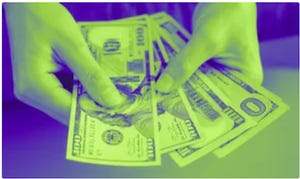
High interest rates can benefit savers.
Getty Images/Amy Kim/CNETThe Federal Reserve decided to hold rates steady again on Wednesday. It may seem like boring economic news, but it matters more than you think. The Federal Open Market Committee, the decision-making body of the central bank, meets several times per year to determine monetary policy and adjust the federal funds rate, which affects the cost of lending between banks.
This month, it decided to keep the benchmark rate at the same range of 4.25% to 4.50%. When interest rates are high, like they are now, the banks have to pay more to borrow money, and so do you, for loans, mortgages, credit cards and more. At the same time, some banks offer better returns for the money and deposits you keep in their institutions.
The Fed doesn’t directly set what banks charge for loans or pay on savings accounts, but it tends to have a ripple effect for customers. In short, high interest rates can lead to a higher yield on your earnings and investments. You’ll just need the right kind of account. Here’s how the central bank’s latest decision will affect your hard-earned cash.
How the federal funds rate affects your money
Raising the federal funds rate is one tool the Fed can use to help tame inflation. When consumer prices are high, the central bank hikes interest rates to discourage borrowing and to slow the economy. That’s the pattern we saw between early 2022 and 2023. When inflation is more or less under control but unemployment is high, the Fed cuts interest rates to make it easier — and more enticing — for households to spend money. The Fed carried out three rate cuts in late 2024.
We’ve all been waiting for more rate cuts, but the Fed has held rates steady so far this year to see how President Donald Trump’s policies, particularly tariffs, affect the economy. The next meeting is July 30, but the Fed isn’t likely to cut interest rates again until September. When those rate reductions come, expect to earn a lower annual percentage yield on certain savings accounts.
Holding rates high gives your savings a boost
Before you make any financial moves this week, take a moment to assess your savings strategy. First, look at where you’re parking your money. Traditional savings accounts with brick-and-mortar banks offer the lowest returns on your savings, 0.02% at best. These accounts are often paired with your checking account, an obvious convenience if you prefer to keep all of your money with one bank.
But if you want to take advantage of the high-interest rate environment, I recommend a high-yield savings account. Online banks and credit unions usually offer high-yield savings accounts, some with APYs between 3% and 4%. Those rates are variable so they could go down in a few months, especially when the Fed decides to cut rates. But you’ll still make more money back with an attractive rate than you would at a traditional bank. If you’re not convinced, take a look at this comparison chart.
Comparing savings accounts
| Traditional savings account | High-yield savings account |
|---|---|
| Mostly brick-and-mortar, so you can transact in person. | Mostly online, so you won’t visit a physical branch often. |
| APYs around 0.02%. If you have $1,000 in savings, you could earn a couple of dollars after a year. | Best APYs around 4%. If you have $1,000 in savings, you could earn $30 to $40 after a year. |
| Often comes with maintenance fees that can dig into your savings. | Usually has lower or no fees since there are fewer overhead costs. |
